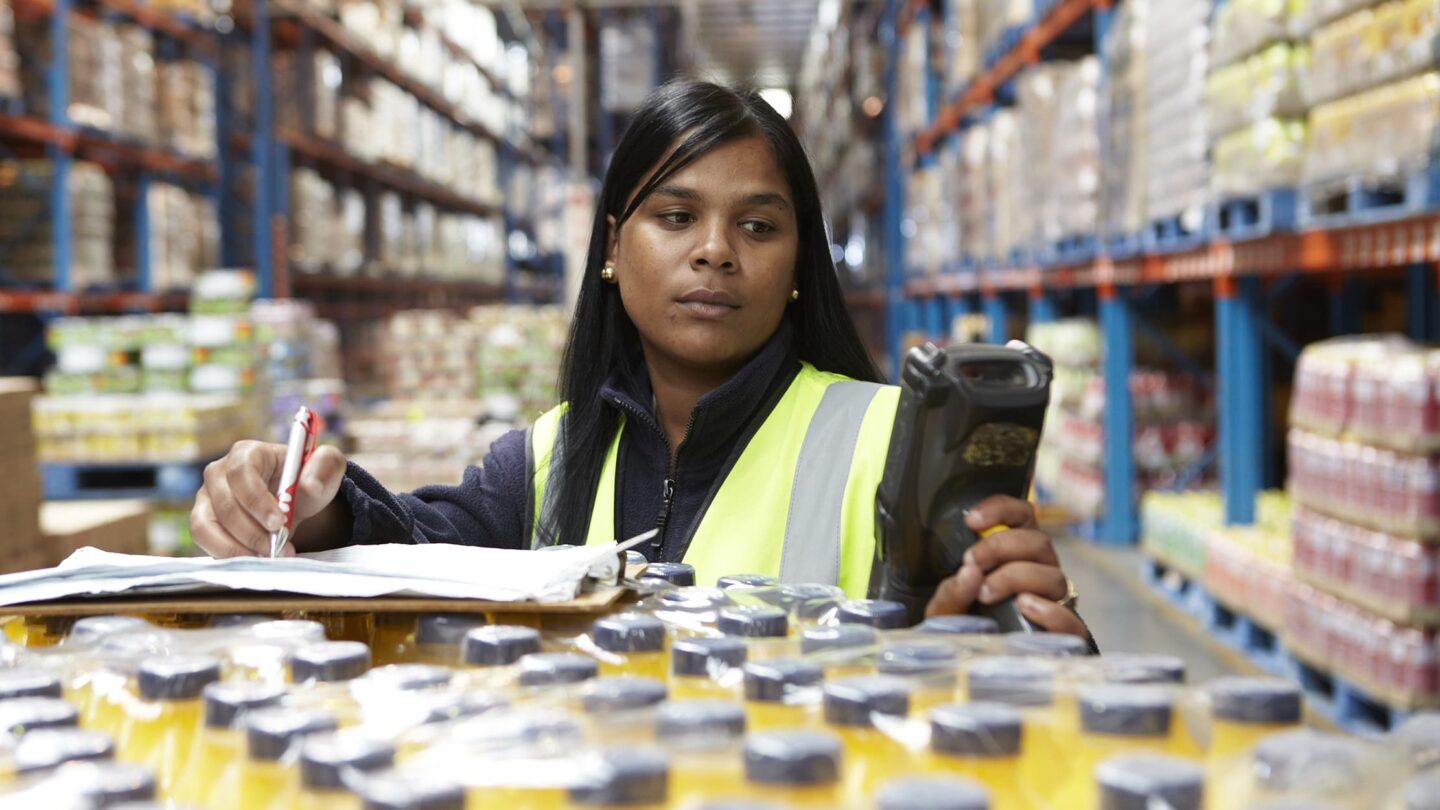Technology & Innovation
Transforming the supply chain – AI and blockchain technology explained
How can Industry 4.0 assist your supply chain management? Read on see supply chain AI and blockchain technology explained...

How can Industry 4.0 assist your supply chain management? Read on for AI and blockchain technology explained.
Globalization has been a significant factor and influence on economic development over the last few decades – and in manufacturing, it will have certainly played a part in your success.
You will recognize that global trade is based on a paradigm of very long chains of globally distributed suppliers. You will also understand that a finished product is an assembly of various parts, with many of the parts manufactured outside your walls.
Let us look at an American-based vehicle manufacturer, for example. As many as 70% to 80% of individual parts that go into the manufacturing of a car are built externally, often in different parts of the world, such as China and Europe.
That is why a pandemic such as coronavirus can be so damaging to a manufacturer. Among the issues that could affect you include a shortage of materials, of labor, of sourcing, and logistical challenges.
Even before coronavirus hit, global supply chains were being affected by the trade war between the US and China, which forced US companies to restructure their supply chains so that they did not place so much reliance on China.
Jeremy Goodwin is the CEO and founder of SyncFab, a company that develops blockchain applications for decentralized supply chain management. He said that coronavirus has highlighted issues in manufacturing’s reliance on long distributed supply chains, especially when a rapid response was needed.
Goodwin said, “Take medical device manufacturing, for example, in the production of ventilators. A ventilator is comprised of around 3000 parts, many of them electronic. In the past 10 to 20 years, China has gained a strong foothold as a competitive supplier for smaller electrical components.
“The coronavirus pandemic created a real bottleneck in the availability of the critical components from China meant to go into the assembly of a finished ventilator. This would result in a complete redesign of the ventilator, and a complete re-sourcing of those individual components that weren’t readily available from these Chinese suppliers.
“There is a complex web in these supply chains because of a tiered structure and intermediaries between manufacturer and suppliers, as well as layers of quality controls, and annual inspections which are industry standard.”
Before coronavirus and any trade war, chief procurement officers (CPOs) in the manufacturing sector were additionally unable to convey full confidence in their procurement teams and that vital ability to source the external parts they needed for their products.
In Deloitte’s Global Chief Procurement Office Survey 2019, more than half of CPOs believed procurement risk was on the rise, fueled by the economic downturn. This figure would arguably be significantly higher now.
The research revealed that CPOs last year were focused on achieving competitive bidding with new suppliers and contract renegotiation with existing suppliers to achieve cost reductions and reduce financial risk.
Re-evaluating and redesigning your supply chain
Coronavirus has highlighted complex issues with today’s large and unwieldy supply chains. It is a time of digital transformation and shorter time-to-market requirements. You might well be asking yourselves what kind of solutions are out there that will shorten your supply chains and make them more responsive, through access to transparent data from suppliers.
One way to do this is by looking at local suppliers that you could use in case of emergency and as a stopgap, particularly if you see gaps in your existing long-standing supplier relationships.
You might want to look for access to components closer to the point of design, production, and assembly, which will shorten the time for manufacturing and distribution. It would also allow for better collaboration between manufacturing engineers and suppliers, mainly when holdups occur.
Certainly, redesigning your supply chain altogether is a complex undertaking. But having a backup capacity for supply, production, and distribution means you reduce the risk of your entire supply chain being disrupted.
The second and primary supply sources should ideally be away from each other. This will decrease your risk but could lead to an increase in costs.
Similarly, having production facilities with local sources of supply spreads the risk and could cut transportation costs.
Read more about blockchain and supply chain:
-
- Trade and traceability: How to battle supply chain disruption
- Business trends in 2020: How manufacturers can navigate what’s ahead
- Roush Yates Engines: ‘Technology allowed us to adapt quickly and manufacture for different industries’
- Can the circular economy ensure supply chain resilience?
- How blockchain can revamp the manufacturing industry
Transforming your supply chain
When it comes to the supply chain, digital transformation brings value by creating a more dynamic response between the procurement departments of suppliers and manufacturers.
You need to look at the ERP systems your IT department is maintaining, checking whether they are fit for purpose and within budget parameters with procurement departments who have tight production schedules and deadlines, as well as quality requirements. IT and procurement must speak the same language, experimenting with digital transformation technology without impacting the manufacturing side negatively.
In this pandemic age, it is certainly time to look at digital transformation and Industry 4.0 to ensure you remain a competitive, efficient, and productive business. Ultimately, the dream scenario would be a real-time connected supply chain that aids you in understanding your production status. You should also look at the ability to carry out smart contracts and payments with artificial intelligence (AI) and machine learning, which can optimally match data between manufacturers and suppliers.
Another technology that you may want to consider is blockchain. With blockchain technology, ecosystems can share and agree on crucial information without an intermediary. Blockchains synchronize all data and transactions across a network, with participants verifying the work and calculations of others.
Many observers see blockchain as superior security than conventional IT solutions such as open firewalls and multi-factor authentication.
Jeremy Goodwin agrees: “While AI can support the matching of data in the supply chain, blockchain is about the security, formatting, and architecture for capturing data – the secure plumbing, if you will, between endpoints”, he says.
Blockchain can increase the transparency of data, allowing suppliers to show manufacturers that they have the right certifications, quality requirements, capacity, and capabilities for the production of a particular part. Essentially it’s about supplier verification and product authentication.
“A finished product is a composition of individual parts. It’s all about tracking the lifecycle of that part from when it’s designed, to when it’s produced, inspected, shipped, and installed.
“Authentication comes up in manufacturing industries such as aerospace, automotive, and medical devices. It is also increasingly coming up in disputes in high-intensity IP industries using multi-tiered international supply chains.”
Although use of blockchain is still limited for supply chain transformation, coronavirus has forced manufacturers to consider alternative digital infrastructure investments that mitigate future risk and drive reward.







Ask the author a question or share your advice